Media | Articles
Barbie’s Real Life Racer: The rise, fall, and resurrection of the “Barbie” Consulier GTP
In hindsight, Johnny Spiva and the “Barbie” Consulier GTP seem destined for each other. Spiva fell in love with the Chrysler-turbo-powered, pink-and-white Targa after seeing it in an outdated Matco Tools calendar at a mechanic’s shop in 1993, but the Consulier’s $69,000 price made him certain he’d never own one. Nevertheless, when Mosler Automotive closed and fire-saled nearly everything in its Florida factory two decades later, Spiva sheepishly called to see if any disused GTPs remained. “Just one,” said the voice on the phone, “The ‘Barbie’ car.”
The salesman, who knew Spiva from his reputation for making bushings for Dodge Omni GLHs and other turbo Mopars, quickly explained that the staff had nicknamed the car “Barbie” for its Miami Vice-style, pink-and-white paint job, created for a calendar promotion in 1991. Instantly aware of what it was, Spiva bought the deeply discounted car sight unseen. It had been sitting for 18 years, which meant a couple of months of serious sweat equity to get it back to roadworthy shape, but that labor of love has since been greatly rewarded.

Ever since Spiva took it to its first show in September 2013, with the car sporting decades-old masking tape and missing its engine cover, “Barbie” has been mobbed with fans. Widely considered an ugly duckling and often savaged by critics when it was new thanks to its uncompromising track-bred aerodynamics and ultra-functional interior, Spiva’s wild-looking car, buoyed this year by Greta Gerwig’s movie, gets the kind of attention creator Warren Mosler hoped for when the cars were new.
That’s something of a vindication, but the car deserves more recognition. After all, this was the first road-legal car with a carbon-composite structure and it was successful enough to get banned from multiple racing series. Bombing around the Oregon coast with Spiva, it’s also clear that the GTP is just a joy to drive. For the inside story of how the Consulier GTP and the “Barbie” car came to be, I sat down one-on-one with Mosler.
Just add lightness
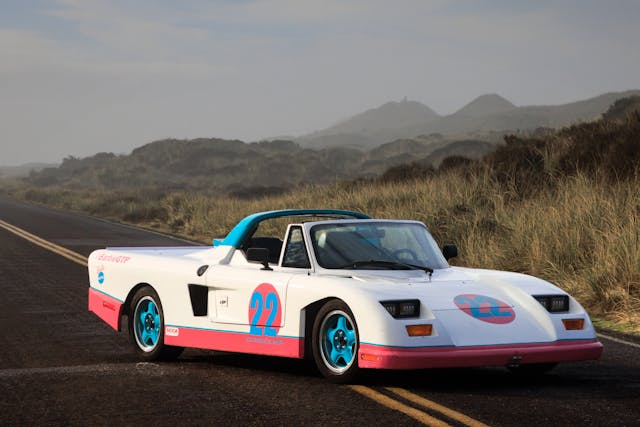
Mosler, now 74, is very much still active as an economist. It was his talents for hedge fund management and bond trading that funded Consulier Industries and the GTP, but the idea started with a Volkswagen Rabbit.
“I always had the car disease, but I had been working in New York and without a car. When I moved to Chicago in 1978 I went shopping for a car and a salesman mentioned Rabbit showroom stock racing. So I bought a Rabbit and went racing. I soon got dangerous because I could see how to make it quicker. Once you’re out there you realize the value of weight.”
Marketplace
Buy and sell classics with confidence
Through racing Mosler met Texas ER doctor and racer Dick Respess, who also ran a plastics business. “He started telling me about composite materials and how you could build a 1000-pound Rabbit with them. I told him if he could build it, I’d buy it.”
Months later Mosler, now living in Florida, checked in on Respess. “He’d made a wedge-shaped shell that was much lighter than if you’d done it in metal, but it was unfinished, so I brought it to Florida and found a shop to help build it.” The prototype wedge eventually got a Mazda 12A rotary and a Porsche gearbox. “It weighed 1600 pounds and was really quick on the track.”
With the idea proven, Mosler set up Consulier Industries in 1985 to build a production version. It would be a composite shell with no metal frame at all but small front and rear subframes for mounting the mechanical components. The inboard rocker arm suspension was designed by Bob McKee, the veteran racing engineer behind the Howmet Turbine car.
Production cars mean emissions regs, so finding a powerplant meant choosing an existing one, but Mosler found all he needed in Chrysler’s 2.2-liter Turbo II. The 2.2 weighed about half as much as the Corvette’s V-8 (America’s most powerful stock engine in 1985) but made only 23 percent less power. Plus, the Turbo II and its five-speed gearboxes were easily adapted to a mid-engine layout. They were even covered by Chrysler’s 5/50 warranty.
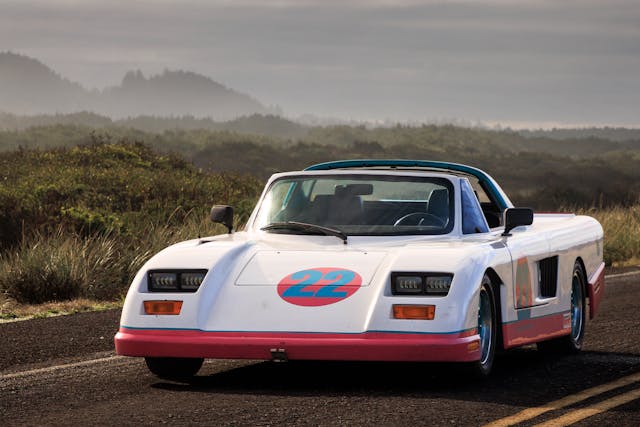
Consulier Industries had no wind tunnel, so the car was partly shaped by aerodynamic trial and error by CART driver Chet Fillip, who later piloted Consuliers in IMSA. “We started with a bluff front end and Chet took the car around Moroso Raceway and said ‘too much downforce,’ so we sawed off some of the front and fiberglassed it over.” This process repeated until Fillip was happy with the balance between stability and downforce. Much of the rest of the car had to look the way it did for structural reasons, with huge sills and thick sail panels.
If you build it, they might not come
The finished car, with its fiberglass, carbon fiber, kevlar, and PVC shell, weighed just 2200 lbs. and easily passed federal crash tests in 1987. It could pull 1G on the skidpad, hit 148 mph and sprint to 60 mph in 5.2 seconds, then stop in just 100 feet. It was impressively fast and an attention-getter, but it was also a pricey, odd-looking machine from an unknown manufacturer.

In the 1980s memories of Bradley GTs and other kit cars were fresh, and drew inevitable comparisons, making the Consulier a hard sell. The arrival of the Acura NSX didn’t help either. There were two GTP trims, the standard track-ready Sport, which at first listed for $48,000, and the luxury, air-conditioned LX, $58,000 in 1988.
“$60,000 was a lot of money then. Not compared to other exotic cars, but we didn’t have the pedigree of a Ferrari or an Aston Martin,” Mosler said. Part of the problem was the heavy use of Chrysler components, which made perfect sense from a cost and function standpoint but which didn’t feel sufficiently “exotic.” This was particularly true in the cabin, where the basic dash and array of instruments evoked a Cessna 172 airplane while the LX’s pair of leather-clad Recaros and a car phone sat at odds with the many borrowed Dodge Daytona bits.
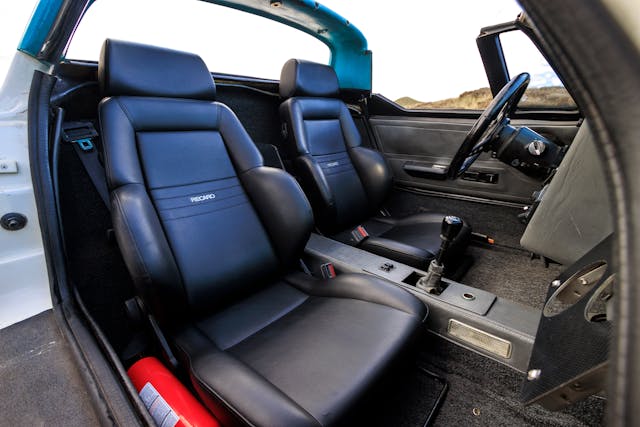
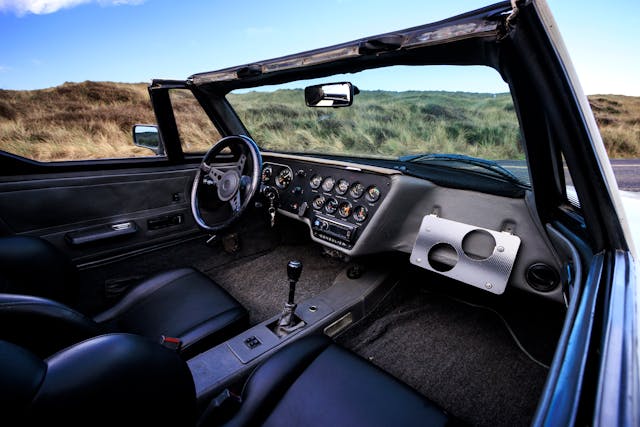
To help, Mosler started looking for better ways to promote it. The first and most obvious was racing, and the GTP first made a splash by winning the pole for the 1990 Nelson Ledges “Longest Day” of racing before making headlines in IMSA Supercar (with Fillip driving) in 1991. Wins at Lime Rock and Laguna Seca led to the weight penalty and, eventually, the ban. “IMSA said it was not in anybody’s interest to have the Consulier dominate the series,” Mosler related.
There were also the “challenges,” in which Mosler publicly offered $25,000 and later $100,000 to anybody who could beat the GTP on a timed lap at a racecourse. Car and Driver took up the first gauntlet in October 1991, narrowly besting a tired three-year-old, race-driving school GTP with a new Corvette. But Mosler disputed the condition of the school’s GTP and many of C&D’s findings. Among other things, C&D made fun of the car’s three 12-volt outlets, but they’d been added by the driving school.
This dustup set the stage for an even worse tussle with Autoweek over the December 1991 $100,000 challenge, which Mosler says nixed six orders. There were disagreements about tires, scrutineering, and track times, and the Consulier was outrun by a Ruf Porsche on racing slicks, but the Ruf wasn’t in the actual competition. Mosler is still faintly annoyed by it, but adds, “The company was losing money, so the six cancellations actually saved some cash.”
Barbie & Ken
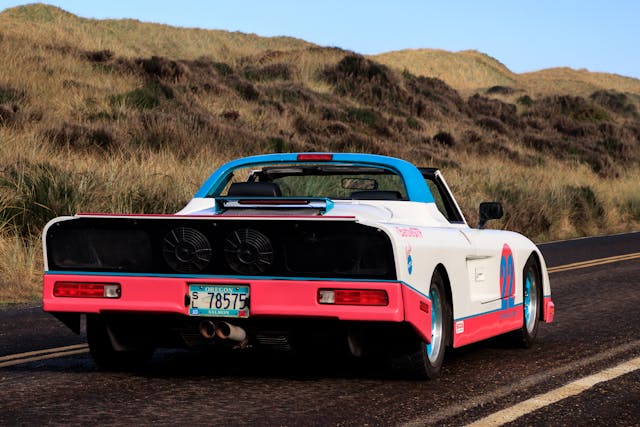
Another option to sell cars? Upping the cool factor. “I was just trying to find things that would sell, so we had a structural engineer named Don Salerno who helped us create the convertible and Targa versions. He also came up with these paint schemes that came to be known as ‘Ken’ and ‘Barbie.’” Where “Barbie” had a Targa top and coral pink circles, “Ken” had blue circles and no top, though a removable hardtop was planned.
“We sent a promotional letter out saying that we now had a ‘Targa style’ convertible. A few weeks later we got a letter from Porsche telling us that ‘Targa’ was their trademark and that we couldn’t use it,” Mosler said. Placing “Barbie” in the Matco calendar was just one more way of getting the message out but to no avail. Fewer than 10 open Consuliers were made, although “Ken” and at least six Targas survive.
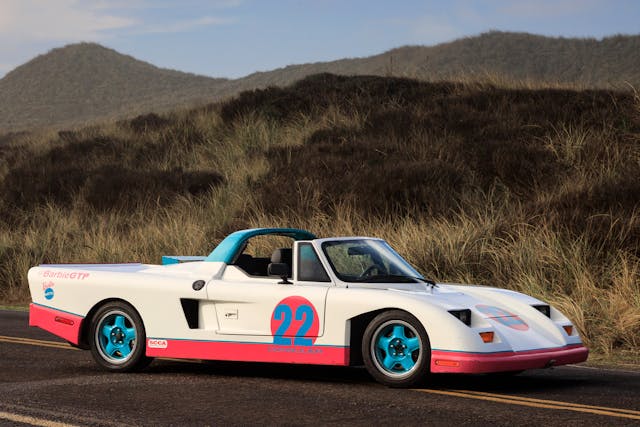
Given the car’s track warrior appeal, more speed seemed a better bet and Mosler did just that with the Series 2 Consulier, reducing weight to 2100 pounds, fitting the Chrysler Turbo III motor (with up to 224 hp), and smoothing out the car’s lines. To obtain the Shelby-tuned Turbo III, Mosler visited Carroll Shelby in a green Series 1 Targa. “I asked him, ‘What’s wrong with this car, why isn’t it selling?’ and he said ‘Not a damn thing! Lee Iacocca and I couldn’t sell Cobras ‘til we stopped building them.’”
When the Series 2 failed to excite in the wake of the $100,000 challenge, Mosler took extreme measures. The company rebranded from Consulier Industries to Mosler Automotive, and the GTP morphed into the V-8 Intruder and later, the Raptor. Both excelled on the track and the latter got banned from C&D’s One Lap Of America for overachieving, but they still didn’t sell. In 2001, the firm introduced the more normal-looking MT900 hypercar.
“Barbie” was used for promotions, test drives, and development until 1995, racking up 29,000 hard miles in the process. But no matter how many people tried it, “Nobody ever bought it. I still have several cars nobody bought,” Mosler laughed. Over the years if a customer was unhappy or wanted to sell their GTP, Mosler would often buy them back or facilitate sales. After the 2008 financial crisis, with the MT900 barely selling, he went back to concentrating on economics, and the company wound down in June 2013.
The Last Consulier
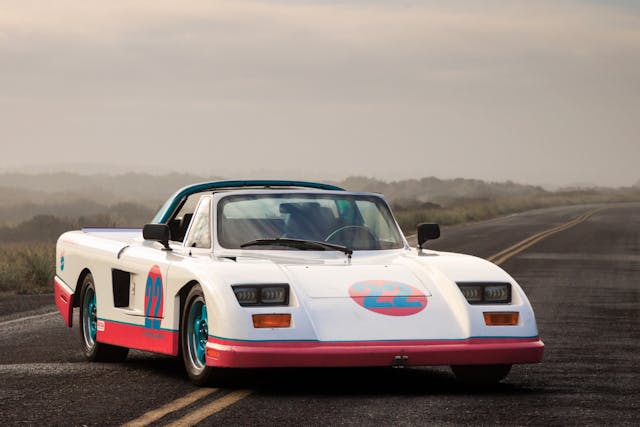
It’s here that Johnny Spiva came into the picture, but his affection for the Consulier was more than skin deep. “My first Mopar was a Plymouth Trailduster,” Spiva said, “But in 1986 I needed something smaller and found the Dodge Omni GLH-S when Hot Rod put one up against a Shelby GT 350. To me, the idea that the GLH-S was faster than the GT 350 was baloney. Until I tried one.” Hooked by the GLH-S, he’s had many 2.2 Turbos since and branched out into making parts for them in the mid-2000s.
“The Consulier is the ultimate car with a Turbo Dodge engine,” Spiva said, and when the fire sale happened, he heard about it through friends. “Rossion, the company that bought out Mosler, wanted everything gone.” Even the deeply discounted $25,000 asking price was steep, but prices fell as the cars were sold off. When the rep quoted him $5,000, he jumped. It was the last-ever “brand new” GTP sold. Spiva also got a tour of what remained at the factory. “There were race cars, training cars, cars with no mileage, even the original prototype.”
“I thought, ‘This is the craziest thing I’ve ever done.’” The targa top, engine cover, and rear wing were missing and the car had been sitting since 1995. Once the 20-year-old tires were inflated, the car rolled onto a trailer and a friend got it running just enough to get it onto a car carrier for transport to Spiva’s Oregon home, but it needed lots of work. “Bushings, shocks, the cooling system full of sludge, tires, brake hydraulics. Even the seat tracks needed help.”
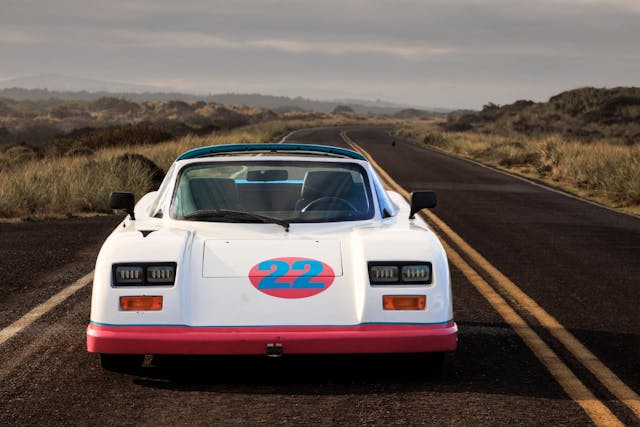
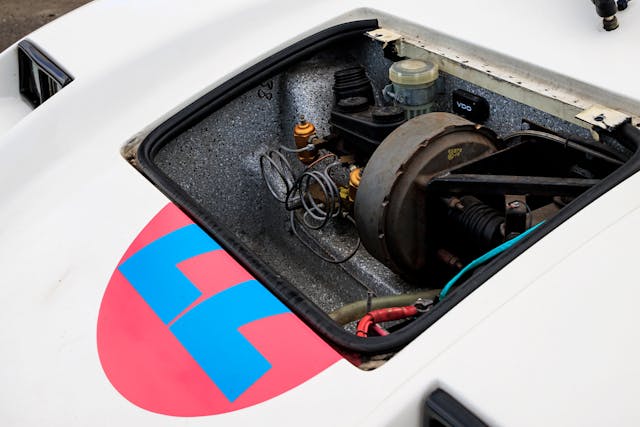
It took two months of nonstop work to get it moving, but when it was ready Spiva and his wife took the car on a jaunt to the Northern California Redwoods and stopped in Port Orford, Oregon on the way back.
“There was a poster advertising a car show for the day after. We had no top and the car still had masking tape on it because Consulier had planned to repaint it. Frankly, it looked like a messed-up kit car, but we found a motel with a carport and showed it the next day. Surprisingly, somebody knew what it was, and people kept coming over to ask about it.”

Eventually, Spiva had the Targa bar repainted, had a new engine cover made (“The original had flown off the car on a drive and been run over by a truck,” he added) and in time even had a custom top made so the car could be driven in rain. Drive it he does.
The car has crisscrossed the country several times and in 2022 it easily devoured a 4600-mile road trip. He’s also autocrossed it and paced the 25 Hours of Thunderhill race in 2018. Days before he showed the car to me in Oregon, he’d driven it to Arizona and back, a 2600-mile round trip, all a testament to how easy it is to use and the car’s basic reliability. “You have to pack light, though.”
Far from feeling weird about the “Barbie” connection, he leaned into it early because it’s part of the car’s charm and identity, even putting Barbie and Mattel stickers on the car years before the movie. “Maybe if I talk it up enough, they’ll put it in the sequel.”
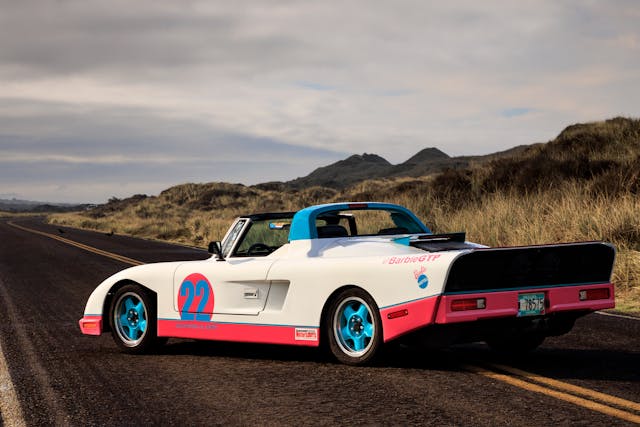
***
Check out the Hagerty Media homepage so you don’t miss a single story, or better yet, bookmark it. To get our best stories delivered right to your inbox, subscribe to our newsletters.
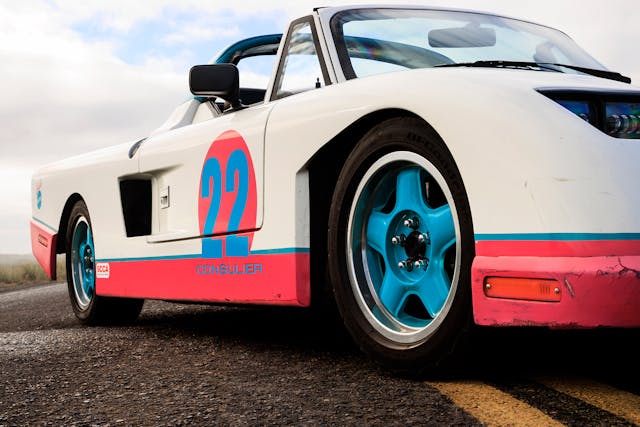









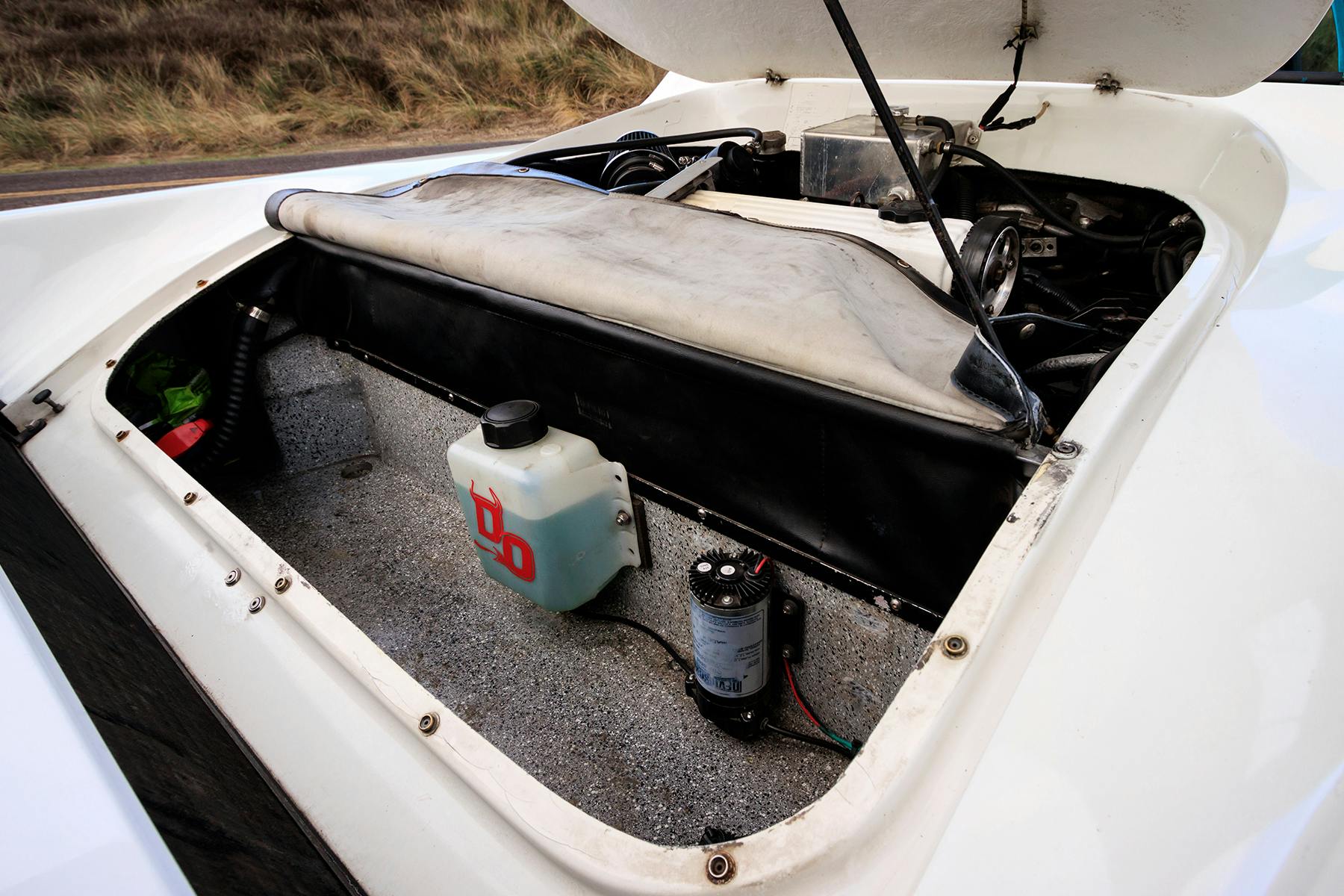





No amount of justification because of it’s performance nor looking through the rose-colored glasses of nostalgia and time will erase the fact that these things are all hideous to look at.
One man’s junk is another man’s treasure. I have been Johnny Spiva’s road trip partner for the last 7 years. We’ve driven Barbie to several Shelby events… From Oregon to Memphis TN, Cincinnati OH, Mannheim PA, Detroit MI, Phoenix AZ, the very top of Pikes Peak, up and down the Tail of the Dragon… I think we’ve traveled through every state. Never trailered. Driven every mile! I’ve been at the wheel doing double the posted speed limit while being chased by a tornado in Indiana … driven through the tail end of a hurricane in Louisiana, Roasted the fuel pump in the middle of Wyoming after hours of 100 mph driving… (try finding a fuel pump for a Consulier in Wyoming)… I’ve been seriously sunburned, totally soaked by rain.. (no top.. gotta driver faster to stay dry), hit by large bugs at 90 mph, and had my gender questioned in West Texas by a little old lady trying to process two grown men, wearing matching pink and teal shirts, driving a Barbie car. Barbie has at lest a pound of my flesh and a pint of my blood from the repairs and upgrades over the years. She’s not working with 190 horsepower today.. closer to the 400 HP range.. and still gets 27 mpg when driven like a sane person. So yeah, she might not win any beauty contests.. (sorry Barbie) … but the smiles per gallon cannot be matched by anything sold by your local car dealership.
It’s an ugly but interesting car. I don’t see the “barbie” in it as it’s no looker.
It is a piece of s..t and the same counts for the article.
Looks like someone pi$$ed in your cornflakes this morning, Bert. But the sad fact is that no-one cares about your opinion, especially expressed that way. If you explained why you thought the car was no good, that *could* be interesting. Your judgement of the story itself is even less clear. Inarticulate rage is not a good look, even in Trumpdumpsterland.
Omg! Are you miserable? I guess you worked for Car and Driver back then. Nice way to start the new year. Stay happy and constructive.
The Mopar 2.2 turbo mechanicals were very good back in the day. It is good to see this on the road, although I am not a fan of the Barbie color scheme. I definitely remember the road course challenge being advertised in AutoWeek during that era.
I always liked Consuliers. Congratulations on getting one and preserving it’s history.
Thanks for writing the story, Alex. I’ve always been intrigued with the Consulier and its eccentric creator, Warren Mosler. It bothered me that despite the car’s track prowess, it was never taken seriously. Some cars are beautiful but run poorly. This car was the opposite, and was sadly forced into extinction.
Banned for being too light! What an indictment of racing and of vested interests more generally. No wonder American automotive technology had to spend forty years catching up with imports after the oil crisis.
Not good looking?…At car shows I alway hear “wow, what a cool car!”… “I love it”…etc.
I think it is awesome! My son just saw one in a hotel parking garage in Florida. Love the story and ingenuity of America entrepreneurs! What is not to like? I would love to own one.